Showing Spotlights 1825 - 1832 of 2786 in category All (newest first):
 'You cannot have an appropriate social dialogue on nanotechnology without an open-minded, consistent and even audacious communication roadmap aiming to bring everyone in.' So begins the foreword to a new Communication Roadmap by the European Commission on communicating nanotechnology in Europe. The EC has now compiled a roadmap for communicating nanotechnology across Europe. It presents the focus, objectives, methodology and actions already in place and to be developed over the next few years. The 188-page document is structured into three main parts: Where are we now? Where do we want to be? and How do we get there? and provides a detailed overview of all relevant activities and initiatives existing or planned across Europe.
'You cannot have an appropriate social dialogue on nanotechnology without an open-minded, consistent and even audacious communication roadmap aiming to bring everyone in.' So begins the foreword to a new Communication Roadmap by the European Commission on communicating nanotechnology in Europe. The EC has now compiled a roadmap for communicating nanotechnology across Europe. It presents the focus, objectives, methodology and actions already in place and to be developed over the next few years. The 188-page document is structured into three main parts: Where are we now? Where do we want to be? and How do we get there? and provides a detailed overview of all relevant activities and initiatives existing or planned across Europe.
Jun 14th, 2010
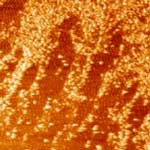 A U.S.-Japanese research team has now developed methods for synthesizing protein-sized polymer particles with a binding affinity and selectivity comparable to those of natural antibodies by combining molecular imprinting nanoparticle synthesis with a functional monomer optimization strategy. In effect, they have created a plastic antibody, an artificial version of the real thing. They have also demonstrated that it works in the bloodstream of a living animal. As a result, we can now consider synthetic polymer nanoparticles, prepared by an abiotic process in the chemical laboratory, as alternatives to biological macromolecules. Applications could include antidotes for toxins, protein purification and therapies that currently use antibodies.
A U.S.-Japanese research team has now developed methods for synthesizing protein-sized polymer particles with a binding affinity and selectivity comparable to those of natural antibodies by combining molecular imprinting nanoparticle synthesis with a functional monomer optimization strategy. In effect, they have created a plastic antibody, an artificial version of the real thing. They have also demonstrated that it works in the bloodstream of a living animal. As a result, we can now consider synthetic polymer nanoparticles, prepared by an abiotic process in the chemical laboratory, as alternatives to biological macromolecules. Applications could include antidotes for toxins, protein purification and therapies that currently use antibodies.
Jun 11th, 2010
 Nanoparticle chirality has attracted much attention among nanoscientists, and the application of chiral nanoparticles in chemistry, biology and medicine is of great importance for the development of new molecular nanosystems. In chemistry, chirality usually refers to molecules. Discovering efficient methods to produce, control and identify enantiomerically pure chiral compounds is critical for the further development of pharmaceuticals, agrochemicals, fragrances and food additives. An important example in the area of nanomaterials is the synthesis of metallic nanoparticles with controlled size, shape, composition, and morphology for catalytic applications.
Nanoparticle chirality has attracted much attention among nanoscientists, and the application of chiral nanoparticles in chemistry, biology and medicine is of great importance for the development of new molecular nanosystems. In chemistry, chirality usually refers to molecules. Discovering efficient methods to produce, control and identify enantiomerically pure chiral compounds is critical for the further development of pharmaceuticals, agrochemicals, fragrances and food additives. An important example in the area of nanomaterials is the synthesis of metallic nanoparticles with controlled size, shape, composition, and morphology for catalytic applications.
Jun 10th, 2010
 Flame retardant materials have become a major business for the chemical industry and can be found practically everywhere in modern society. Unfortunately, conventional methods for making plastic flame retardant involve a range of often very toxic chemicals. It has already been demonstrated that the flame retardancy of polymeric materials without the use of toxic chemicals could become possible thanks to the synergistic effect of nanoclay and carbon nanotubes. In a step further, researchers have now shown that the use of buckypaper is more efficient as a fire retardant in polymer composites in comparison to directly mixing carbon nanotubes into the composite matrix.
Flame retardant materials have become a major business for the chemical industry and can be found practically everywhere in modern society. Unfortunately, conventional methods for making plastic flame retardant involve a range of often very toxic chemicals. It has already been demonstrated that the flame retardancy of polymeric materials without the use of toxic chemicals could become possible thanks to the synergistic effect of nanoclay and carbon nanotubes. In a step further, researchers have now shown that the use of buckypaper is more efficient as a fire retardant in polymer composites in comparison to directly mixing carbon nanotubes into the composite matrix.
Jun 7th, 2010
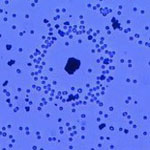 For nanotechnology researchers, movement at the nanoscale is a challenging problem and there is much to be learned from nature's motor systems. There are various approaches to creating self-propelled micro- and nanosized motors and one promising approach rests on catalytic conversion of chemical to mechanical energy - a process that is ubiquitous in biology, powering such important and diverse processes as cell division, skeletal muscle movement, protein synthesis, and transport of cargo within cells. Self-propelled motion of synthetic materials can be useful in applications such as bottom-up assembly of structures, pattern formation, drug delivery at specific locations, etc. Researchers have now presented a novel and versatile light-driven catalytic micromotor system, which is the cleanest and simplest of its kind.
For nanotechnology researchers, movement at the nanoscale is a challenging problem and there is much to be learned from nature's motor systems. There are various approaches to creating self-propelled micro- and nanosized motors and one promising approach rests on catalytic conversion of chemical to mechanical energy - a process that is ubiquitous in biology, powering such important and diverse processes as cell division, skeletal muscle movement, protein synthesis, and transport of cargo within cells. Self-propelled motion of synthetic materials can be useful in applications such as bottom-up assembly of structures, pattern formation, drug delivery at specific locations, etc. Researchers have now presented a novel and versatile light-driven catalytic micromotor system, which is the cleanest and simplest of its kind.
Jun 2nd, 2010
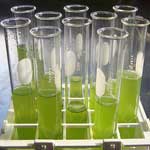 Developing chemicals, molecular precursors, and industrial products from petroleum resources is a conventional practice. Plastics, detergents, even pharmaceuticals are derived from petrochemicals. With an increasing focus on the economic and environmental issues associated with the processing of petroleum-based chemicals, scientists are seeking for alternative routes to develop molecules from naturally available plant or crop-based raw materials. Particularly interesting for the fields of nanotechnology is the design and development of soft nanomaterials from renewable sources. Generating these materials from renewable resources could have a significant impact on production technologies and economies.
Developing chemicals, molecular precursors, and industrial products from petroleum resources is a conventional practice. Plastics, detergents, even pharmaceuticals are derived from petrochemicals. With an increasing focus on the economic and environmental issues associated with the processing of petroleum-based chemicals, scientists are seeking for alternative routes to develop molecules from naturally available plant or crop-based raw materials. Particularly interesting for the fields of nanotechnology is the design and development of soft nanomaterials from renewable sources. Generating these materials from renewable resources could have a significant impact on production technologies and economies.
Jun 1st, 2010
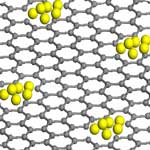 Among the various production methods for carbon nanotubes and graphene, currently only chemical vapor deposition techniques demonstrate a significant opportunity for mass production of CNT material. Using the CVD process, which is based on the catalytic action of metals, manufacturers can combine a metal catalyst such as iron with reaction gases such as hydrogen to form carbon nanotubes inside a high-temperature furnace. In order to optimize the synthesis process, a detailed understanding of the interaction between nanotubes or graphene and metal atoms is required - something that has been missing so far. Researchers in France have now shown that it is possible to create atomic-scale defects in carbon nanotubes and in graphene in preselected positions with a focused electron beam and to use these defects as trapping centers for foreign atoms.
Among the various production methods for carbon nanotubes and graphene, currently only chemical vapor deposition techniques demonstrate a significant opportunity for mass production of CNT material. Using the CVD process, which is based on the catalytic action of metals, manufacturers can combine a metal catalyst such as iron with reaction gases such as hydrogen to form carbon nanotubes inside a high-temperature furnace. In order to optimize the synthesis process, a detailed understanding of the interaction between nanotubes or graphene and metal atoms is required - something that has been missing so far. Researchers in France have now shown that it is possible to create atomic-scale defects in carbon nanotubes and in graphene in preselected positions with a focused electron beam and to use these defects as trapping centers for foreign atoms.
May 31st, 2010
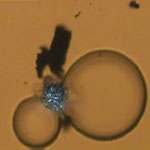 Carbon nanotubes' interesting structural, chemical, electrical, and optical properties are explored by numerous nanomedicine research groups around the world with the goal of drastically improving performance and efficacy of biological detection, imaging, and therapy applications. In many of these envisaged applications, CNTs would be deliberately injected or implanted in the body, for instance as intercellular molecular delivery vehicles. One of the issues researchers have been exploring is how - once the primary role of CNTs in a therapeutic application is fulfilled - they can promote the rapid removal of CNTs from the body, or the dispersal of aggregated clusters to sub-micron size in order to mitigate the harmful effects. Researchers in India have now demonstrated a novel, optical tweezers based approach to scavenge CNTs from biological fluids such as blood.
Carbon nanotubes' interesting structural, chemical, electrical, and optical properties are explored by numerous nanomedicine research groups around the world with the goal of drastically improving performance and efficacy of biological detection, imaging, and therapy applications. In many of these envisaged applications, CNTs would be deliberately injected or implanted in the body, for instance as intercellular molecular delivery vehicles. One of the issues researchers have been exploring is how - once the primary role of CNTs in a therapeutic application is fulfilled - they can promote the rapid removal of CNTs from the body, or the dispersal of aggregated clusters to sub-micron size in order to mitigate the harmful effects. Researchers in India have now demonstrated a novel, optical tweezers based approach to scavenge CNTs from biological fluids such as blood.
May 27th, 2010
 'You cannot have an appropriate social dialogue on nanotechnology without an open-minded, consistent and even audacious communication roadmap aiming to bring everyone in.' So begins the foreword to a new Communication Roadmap by the European Commission on communicating nanotechnology in Europe. The EC has now compiled a roadmap for communicating nanotechnology across Europe. It presents the focus, objectives, methodology and actions already in place and to be developed over the next few years. The 188-page document is structured into three main parts: Where are we now? Where do we want to be? and How do we get there? and provides a detailed overview of all relevant activities and initiatives existing or planned across Europe.
'You cannot have an appropriate social dialogue on nanotechnology without an open-minded, consistent and even audacious communication roadmap aiming to bring everyone in.' So begins the foreword to a new Communication Roadmap by the European Commission on communicating nanotechnology in Europe. The EC has now compiled a roadmap for communicating nanotechnology across Europe. It presents the focus, objectives, methodology and actions already in place and to be developed over the next few years. The 188-page document is structured into three main parts: Where are we now? Where do we want to be? and How do we get there? and provides a detailed overview of all relevant activities and initiatives existing or planned across Europe.
 Subscribe to our Nanotechnology Spotlight feed
Subscribe to our Nanotechnology Spotlight feed





